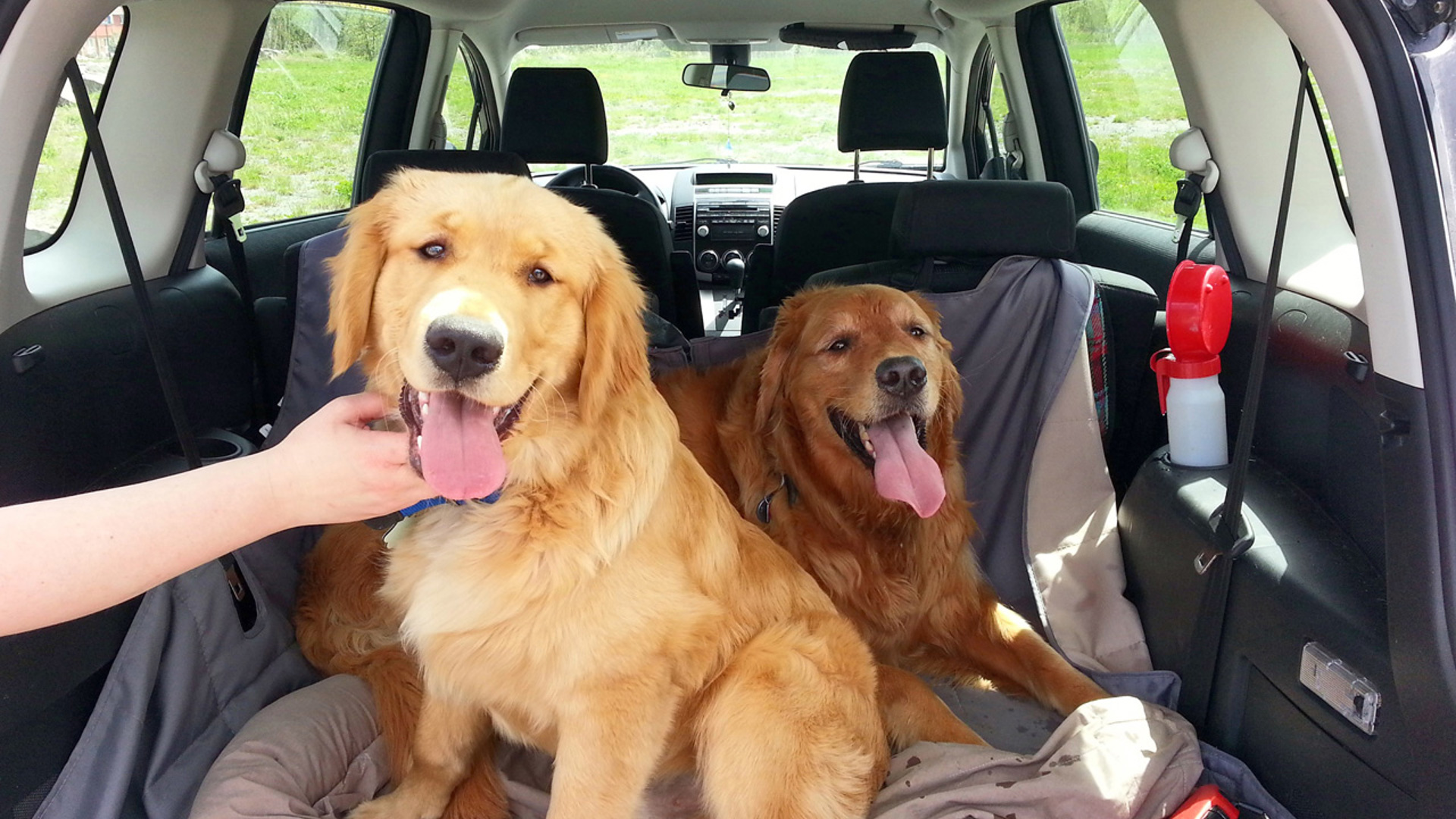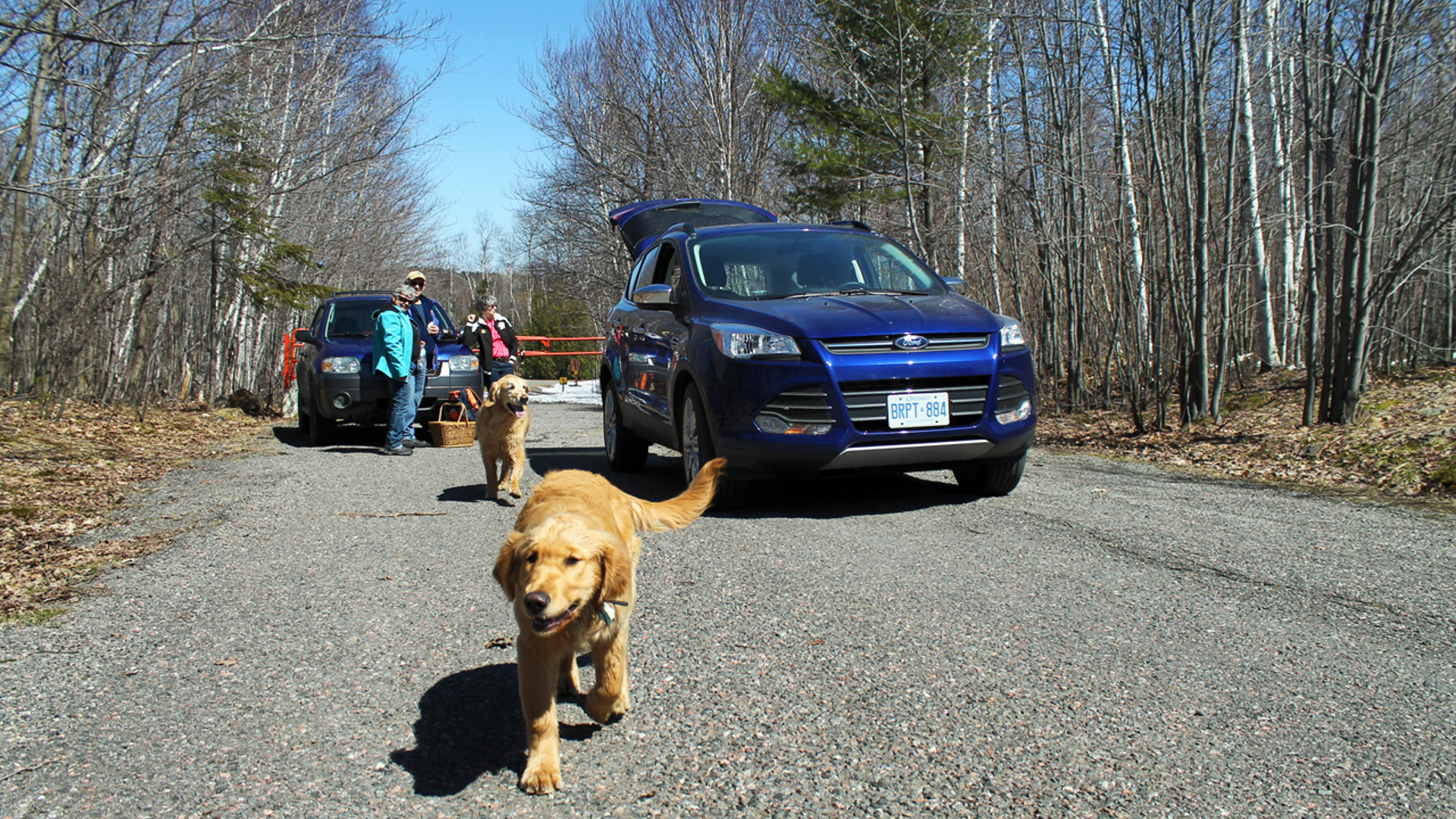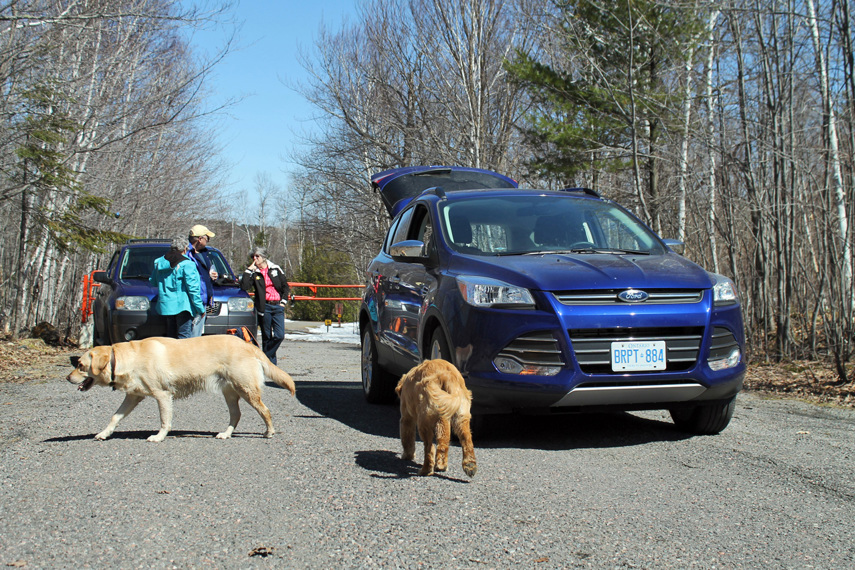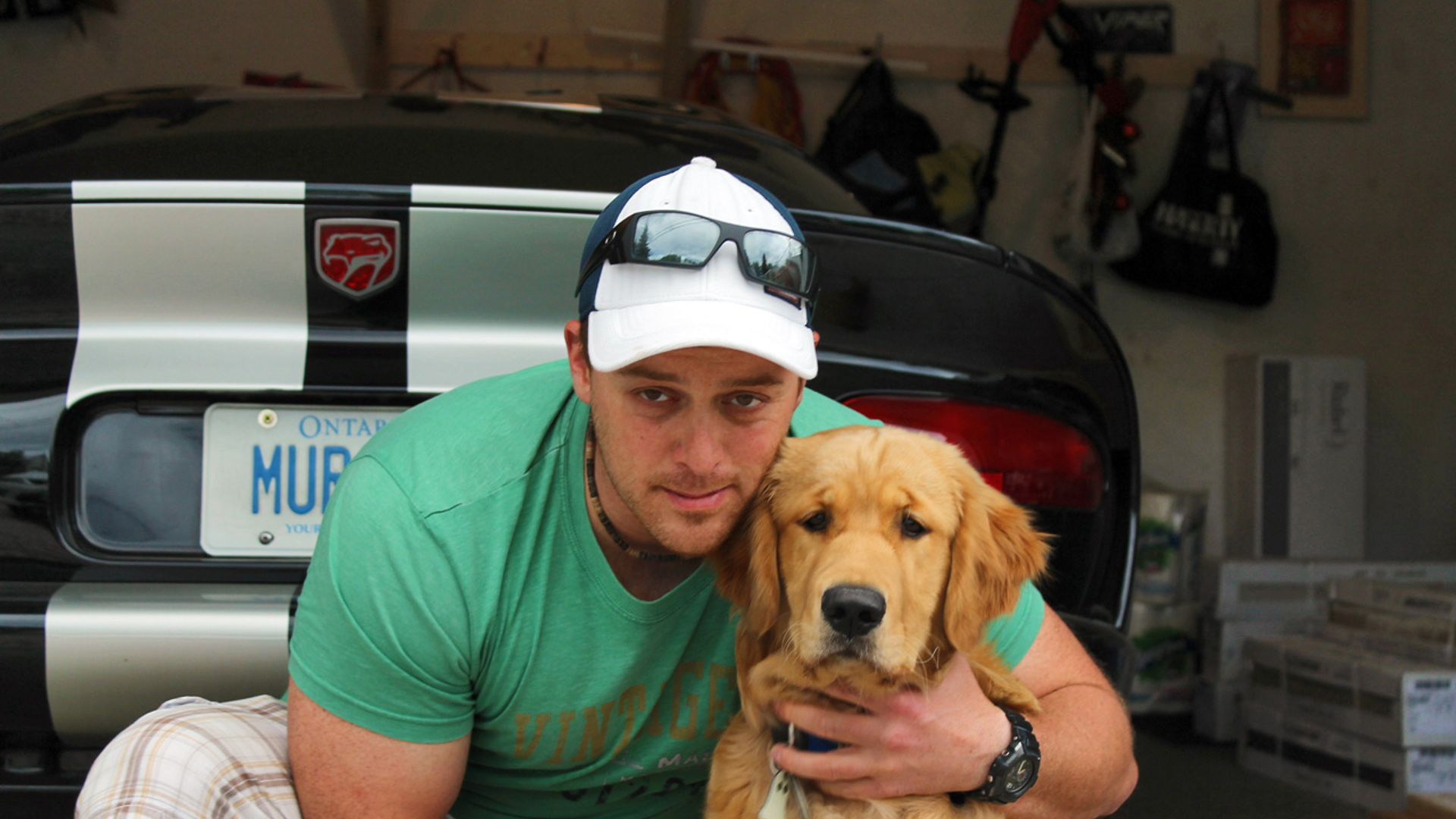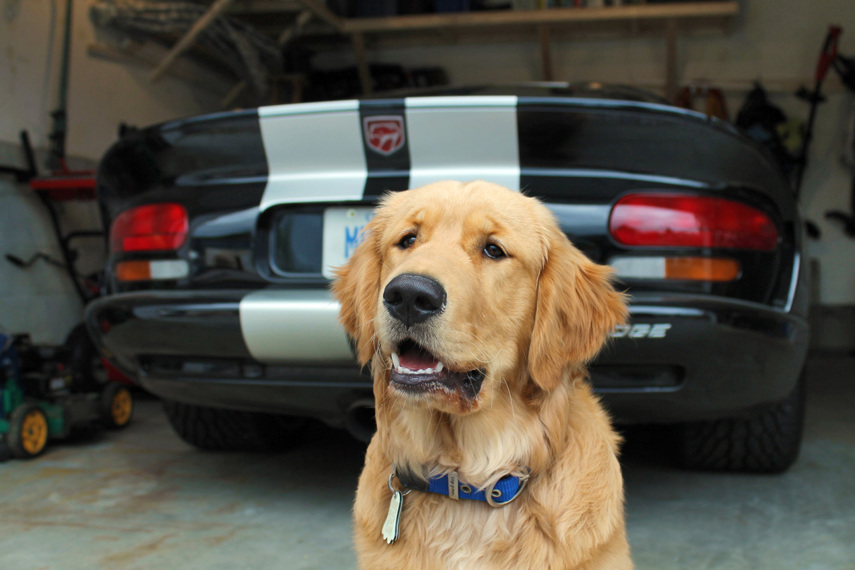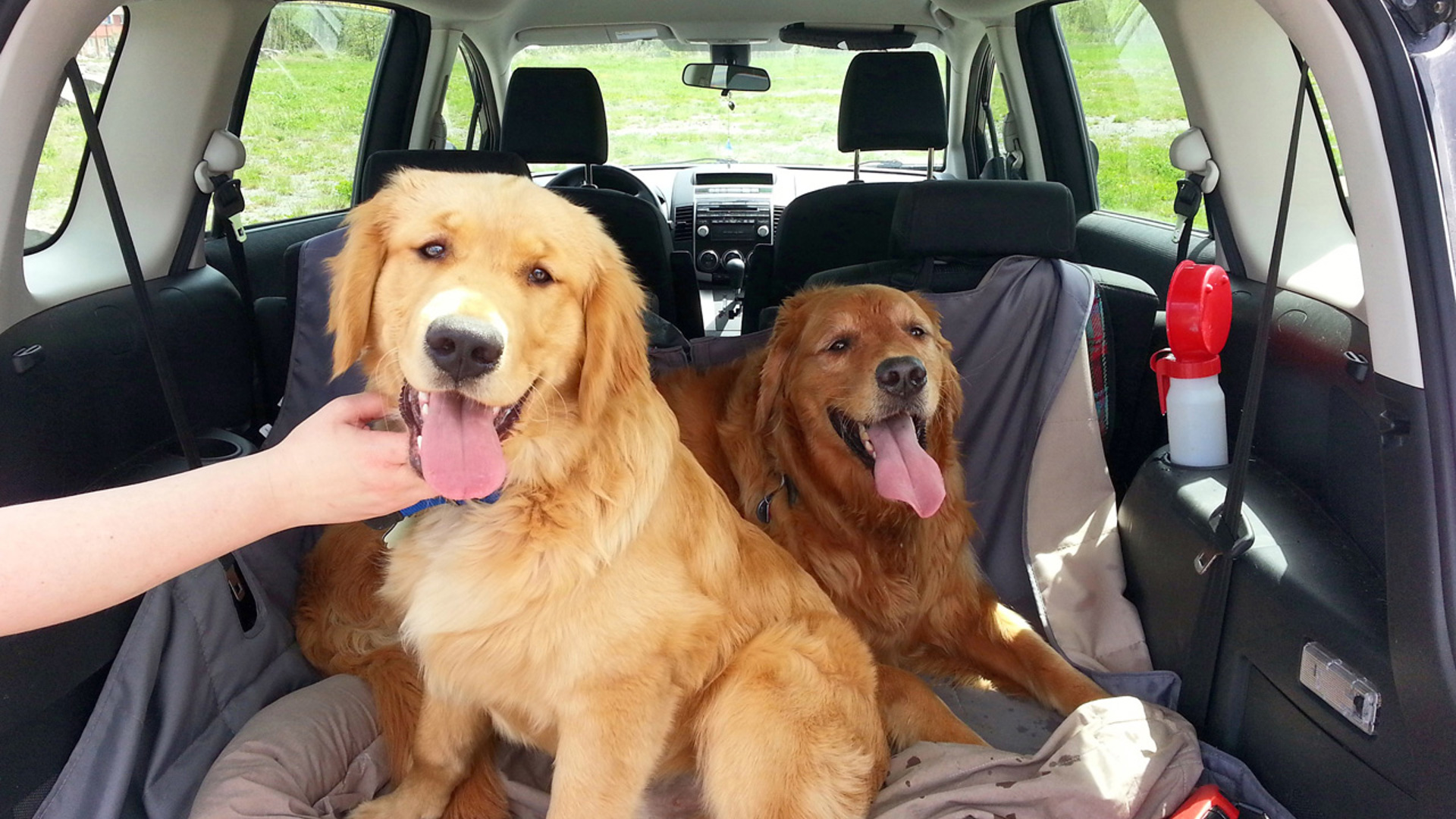Dogs are filthy, loyal creatures that hold a place in the hearts of countless Canadians—your writer included. I recently acquired a brand new 2014 model canine myself. Brand? Retriever. Colour? Golden. Powerplant? A wonder-stomach that turns kibble into offensive odour several scoops at a time. Name? Ghost. Features? “High-five”, “sit”, “stay”, “lie down” and “drop it”. Ghost excels at bringing my shoes to me about 29 times an hour, sleeping beside me while I work, and lying in the sun smiling at things.
Ghost and I will spend many hours in the car together over his life—so to start us off right in the world of car rides, I figured I’d talk to my local vet for some more information and tips and share my findings with my dog-loving readers.
Dogs Are Best Treated Like Humans When It’s Time for a Car Ride
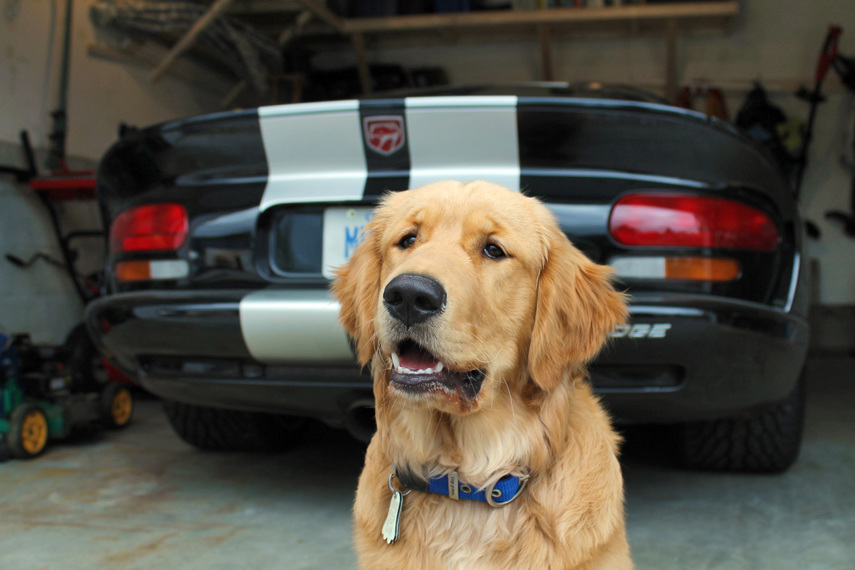
According to staff at my local animal hospital, successful travel with a new dog (or an old one) is largely a function of mitigating stress, and treating the animal as we’d treat our kid, significant other, or best friend in the car.
Having a comfort level while traveling is important for a dog—as it ensures they don’t become nervous or agitated. Dogs tend to become fidgety when they’re uncomfortable—so seasoning Ghost to enjoy the ride was vital.
Karen, a Veterinary Tech at Sudbury’s Barrydowne Animal Hospital mentions: “Puppies can start going for car rides as soon as possible—when they are young they are more receptive to learning new things, so the more you teach them when they are young that car rides are a normal part of their life, the more comfortable they will eventually be with going for a ride.”
She’s right. About 10 minutes after Ghost was delivered to my house, we went for our first car ride. For this little trip, I put him in a laundry basket lined with soft blankets to keep him in one spot, as he was a little frisky and about the size of a house cat. But after a few minutes, he chilled out, relaxed, and now perks up and cocks his head sideways whenever he suspects its car-ride time. No issues—though some folks aren’t as lucky.
Overcoming Fear of Cars
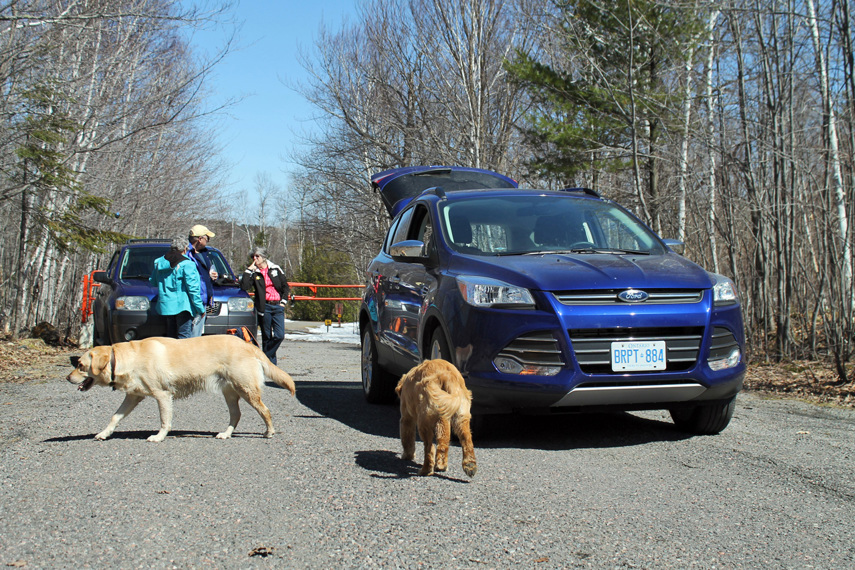
Some dogs hate car rides more than pesky squirrels and the neighbour’s stupid cat combined. For these, getting into that mysterious and noisy device that us humans use to leave the house and come back later causes undue stress and anxiety. Especially if your dog senses that you’re stressed by going for a car ride, because he’s stressed, too.
Vet Tech Karen offers some tips for stressy dogs that aren’t nuts about car rides.
“First, take a deep breath and try and relax. If your dog senses your stress, you're reiterating to him that riding in cars is something to have anxiety about. Every car ride is a new opportunity to encourage a behaviour that is more appropriate and less stressful to him or her and you. Start by taking your dog for short car rides around the block and back home. When your dog gets home reward him or her with a treat – whether it be food, a favorite toy, or something else that they only get after returning home from a car ride. This will help him or her to associate car rides with something positive.
Smaller pets can also get stressed because they don’t feel secure in your vehicle. Every time you turn or go over a bump or pothole they may roll around the car, causing anxiety since they’re not on a stable surface. And if your dog is having stress from nausea, there are products that your veterinarian can dispense/recommend. Sometimes the nausea can be related to the issue of not feeling secure in the vehicle as well. There are also some natural products—pheromone collars or sprays, herbal or nutraceutical products than can be recommended by your veterinarian for general anxiety and stress.”
Remember, us humans are in control of our animal’s environments—and anything we can do to reduce stress in that environment is going to pay off with a more comfortable and laid-back car-ride buddy. Also remember that most dogs would sell their soul for a nibble of treat—so use the treats to reinforce that the car ride is a good thing, as needed.
Keep Your Pet Inside the Vehicle
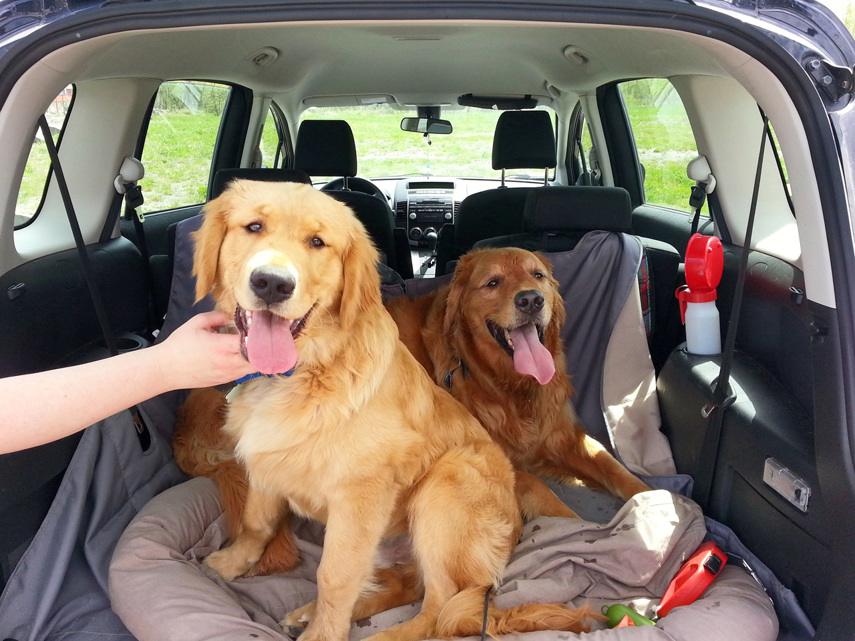
That car ride, by the way, should never involve your dog sitting in the open box of a pickup. Though this seems common sense, it’s a practice that’s still sadly common, and one that keeps people like Karen busy at work.
“This is a very dangerous way to transport your dog,” she says.
“If there is ever an accident or need for sudden braking, what’s stopping your dog from flying out the back of the truck? You may be dealing with having a serious injury like broken bones, or your pet could be propelled into traffic, causing another accident that could harm other people. Or, he could be killed. We’ve seen a dog fly into the back of a truck window and cause an injury to the driver, too. There are many reasons to not have your dog in the back of a pickup—for the same reasons it’s illegal for us to sit back there, too. It’s just not safe.”
Dr. Amber Reed adds that travelling in an open box isn’t the only dangerous way to transport a dog—and that I should probably never let Ghost do one of the most popular things dogs do while driving: stick his head out the window.
“One reason for this is it can cause issues with their eyes—any debris in the air moving quickly can cause injury to your pet’s eyes. Humans can use protective eye gear if needed. Dogs can’t. Also, your dog may escalate from this behaviour to jumping out the moving vehicle, which can cause serious harm. I’ve seen dogs learn or accidently open the automatic window while stepping on the door controls to reach their head outside and fall completely outside the vehicle, or end up closing the window on themselves and choking. Your dog, like you, should be secured safely in your vehicle with all body parts inside.”
So, my little Ghost will never enjoy the olfactory sensory overload of sticking his nose out of the car at 80 km/h—but it’s for his own good.
What about Seatbealts?
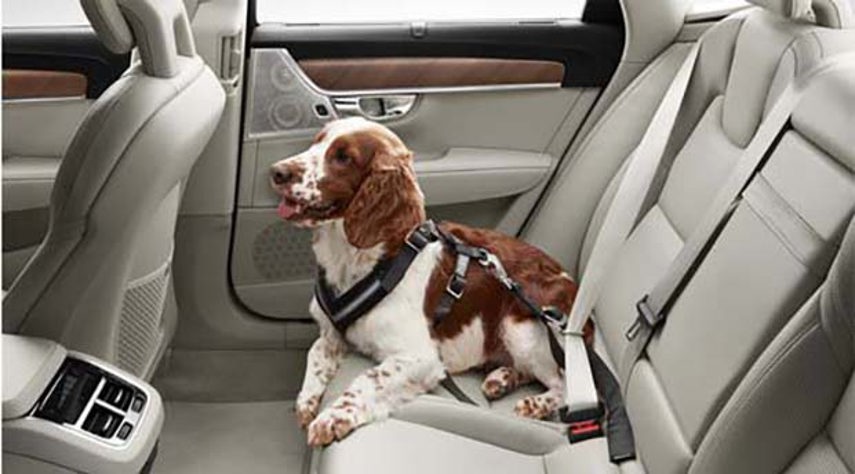
But if dogs need to be fully inside of the vehicle’s cabin at all times, do they need seatbelts, like us?
Vet Tech Karen offers this advice: “Your dog should be wearing a doggy seatbelt or harness that secures him/her to the seat of your car. Also like children, your dog should not be in the passenger seat under a certain weight and especially if there is an airbag that can engage and hurt him/her. This is also a good reason to not have your dog on your lap while driving. During an accident, your airbag may engage, hurting your dog and possibly hurting you as well, when your dog is crushed between you and the airbag.”
An easier option to keep your animal in one place? Karen suggests securing the pet in a crate, and then securing that crate to the seat with seatbelts or another securing device. Whether you use a harness, a secured crate or some other method, keeping the pup confined to one place is ideal for his safety—and yours. The gist? You don’t want your pooch becoming a dangerous flying projectile in the case of an accident.
Clean Up on Aisle 3
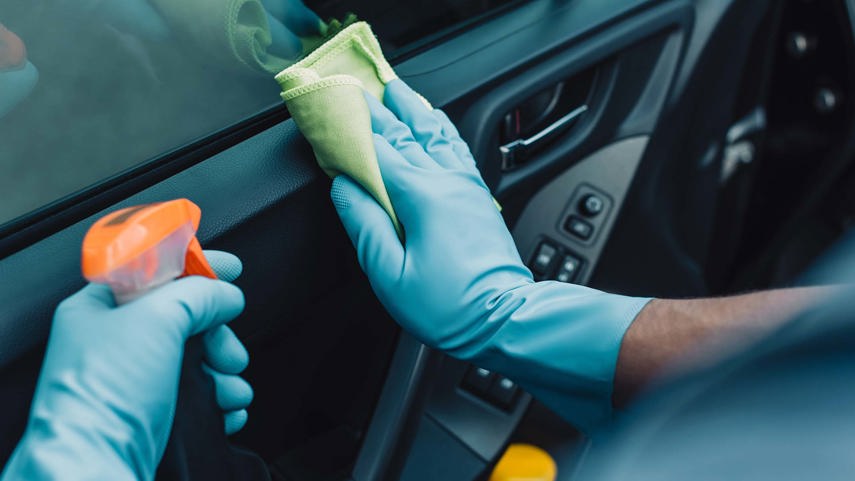
And, should a flying projectile of happen to escape your dog in the car, possibly from having a few too many treats last night, don’t panic. Whether it’s barf or poop or pee or all three all over the carpeting of your Civic, there are products available that can take care of the mess quickly and properly.
Look for an enzymatic cleaner that works by ‘digesting’ the mess. Pick up as much of it as you can with some paper towel and/or a plastic bag, absorb some of the moisture by blotting (i.e., placing something absorbent over the mess and applying some weight to draw the moisture out), and then applying the appropriate cleaner. Don’t wipe or scrub—or the mess will likely just get worse and spread. I keep a few of those super-absorbent indoor puppy pee pads in the car at all times, just in case—since they’ll absorb a full bladder’s worth of yucky urine with ease.
Dr. Reed adds “There are a variety of enzymatic cleaner and other products available—ask your local veterinarian which ones they recommend. However, the best option is still prevention, as messes in the car such as diarrhea or vomiting can be due to stress, too.”
